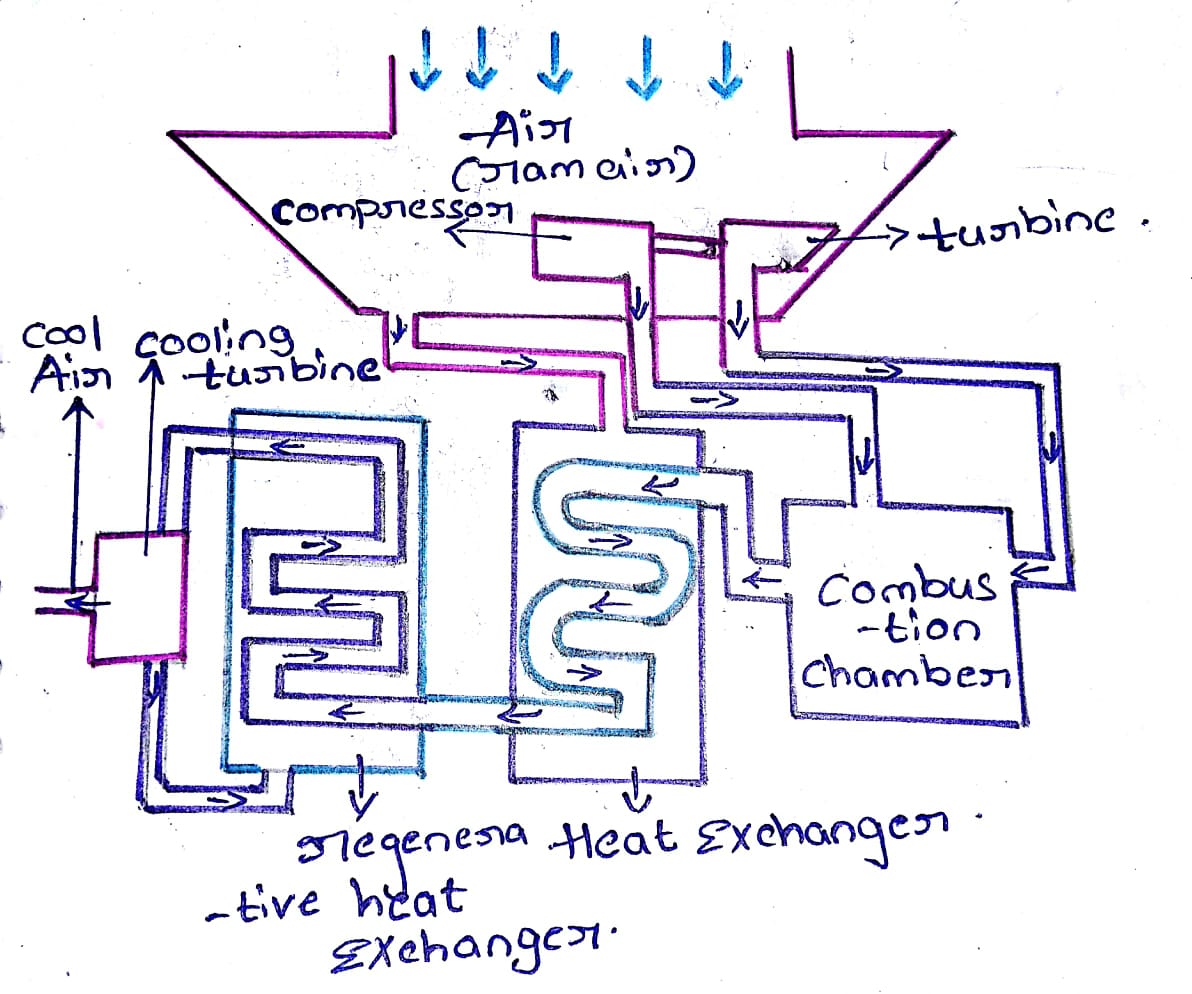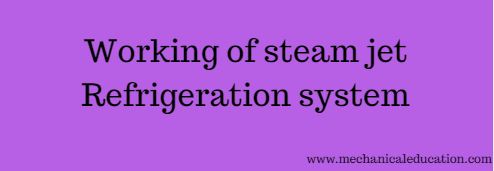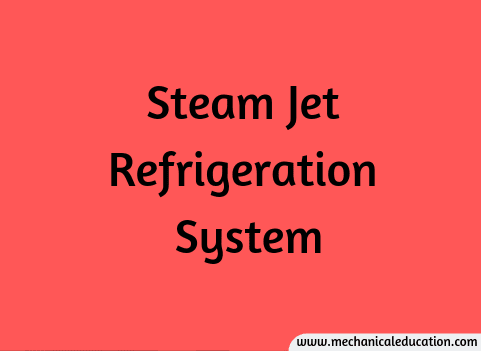What is Hand-Operated Expansion Valve?
A hand-operated expansion valve refers to a type of expansion valve that can be manually controlled or adjusted by hand. Expansion valves are crucial components in refrigeration and air conditioning systems, regulating the flow of refrigerant into the evaporator coil. The hand-operated aspect allows for manual adjustment of the valve to control the rate at which refrigerant is released into the evaporator.
Here are some key features and considerations related to hand-operated expansion valves
- Manual Control:
- The term “hand-operated” indicates that the expansion valve can be adjusted manually by turning a knob, screw, or other control mechanism. This manual control provides the flexibility to modify the refrigerant flow based on system requirements.
- Adjustability:
- Hand-operated expansion valves offer adjustability, allowing operators or technicians to fine-tune the system’s performance. This feature is particularly useful when dealing with variations in load conditions or when specific adjustments are needed for optimal efficiency.
- Simplicity:
- Hand-operated expansion valves are generally simpler in design compared to automatic or electronically controlled valves. The simplicity makes them suitable for applications where advanced control features are not necessary.
- Applications:
- These valves might be used in a range of applications, including smaller refrigeration systems, experimental setups, or situations where manual control is preferred or required.
- Training and Educational Use:
- Hand-operated expansion valves can be valuable in educational settings for training purposes. They allow students and technicians to understand the principles of refrigeration control by manually adjusting the valve and observing its impact on the system.
- Limited Automation:
- Unlike automatic expansion valves that respond to system conditions such as temperature or pressure, hand-operated valves require manual intervention. This limitation makes them less suitable for fully automated or complex systems.
- Cost-Effectiveness:
- Hand-operated expansion valves are often more cost-effective than their automatic counterparts. This affordability can be an essential factor in certain applications, especially where advanced control features are not necessary.
- Maintenance and Calibration:
- Regular maintenance and calibration may be required to ensure that the hand-operated expansion valve continues to function accurately. Technicians need to monitor and adjust the valve as needed to maintain system performance.
- Compatibility with Specific Systems:
- These valves are commonly found in specific systems where manual control aligns with the operational needs. They may be used in smaller air conditioning units, refrigerators, or experimental setups.
- Alternative Technologies:
- In applications where precise and automated control is crucial, alternative technologies like thermal expansion valves (TXVs) or electronic expansion valves (EEVs) might be preferred over hand-operated valves.
While hand-operated expansion valves have their applications and advantages, the choice of expansion valve depends on the specific requirements, size, and complexity of the refrigeration or air conditioning system.
Advantages of Hand-Operated Expansion Valve
Hand-operated expansion valves offer certain advantages in specific applications where manual control is desired or necessary. Here are some advantages of hand-operated expansion valves:
- Manual Adjustability:
- The primary advantage of hand-operated expansion valves is their manual adjustability. Operators or technicians can easily control the refrigerant flow rate by adjusting the valve manually. This feature allows for real-time adjustments based on system requirements.
- Flexibility in System Tuning:
- Manual control provides flexibility in tuning the system for optimal performance. Technicians can adjust the valve to match varying load conditions, making hand-operated expansion valves suitable for applications with changing cooling demands.
- Simplicity and Reliability:
- Hand-operated expansion valves are simpler in design compared to automatic or electronic counterparts. The simplicity enhances reliability, making these valves suitable for applications where a straightforward and robust solution is preferred.
- Cost-Effectiveness:
- Hand-operated expansion valves are often more cost-effective than automatic or electronic alternatives. This cost advantage can be significant in situations where advanced control features are not necessary, making them an economical choice for specific applications.
- Educational Use:
- These valves are valuable for educational purposes in training programs for students and technicians. Their manual adjustability allows learners to gain hands-on experience and a better understanding of refrigeration system dynamics.
- Compatibility with Smaller Systems:
- Hand-operated expansion valves are well-suited for smaller refrigeration or air conditioning systems where precise automated control may not be essential. Their simplicity and cost-effectiveness make them suitable for compact applications.
- Ease of Installation:
- The manual nature of these valves contributes to their ease of installation. There are no complex control systems or electronic components, simplifying the overall setup.
- Reliance on Operator Expertise:
- Hand-operated valves rely on the expertise of the operator or technician for adjustments. This can be an advantage when experienced personnel are available to fine-tune the system based on their knowledge and observations.
- Adjustments in Non-Standard Conditions:
- In certain situations where non-standard conditions or experimental setups are involved, hand-operated expansion valves provide the flexibility to make adjustments outside typical operating parameters.
- Suitability for Custom Applications:
- Hand-operated valves are suitable for custom applications or experimental setups where the operator wants direct control over the refrigerant flow. This can be advantageous in research or testing environments.
While hand-operated expansion valves offer these advantages, it’s essential to consider the specific requirements of the application. In cases where automated control, precise regulation, or compatibility with larger systems is crucial, alternative technologies like thermal expansion valves (TXVs) or electronic expansion valves (EEVs) might be more appropriate.
Disadvantages of Hand-Operated Expansion Valve
Hand-operated expansion valves, despite their advantages in certain applications, come with some disadvantages that need to be considered. Here are some drawbacks associated with hand-operated expansion valves:
- Limited Automation:
- One of the significant disadvantages is the lack of automation. Hand-operated valves rely on manual adjustments, which may not be suitable for systems requiring precise and continuous control based on changing conditions.
- Dependence on Operator Skill:
- The effective operation of hand-operated expansion valves depends on the skill and experience of the operator. Inexperienced or inconsistent adjustments may lead to suboptimal system performance.
- Inability to Respond to Dynamic Conditions:
- Hand-operated valves may struggle to respond rapidly to dynamic changes in system conditions, such as sudden fluctuations in load or temperature. This limitation can result in less efficient system operation.
- Potential for Human Error:
- Manual adjustments are prone to human error. Mistakes in setting the valve can impact the overall efficiency and effectiveness of the refrigeration system.
- Limited Precision:
- Hand-operated valves offer less precision compared to automatic or electronic expansion valves. Achieving fine-tuned control over the refrigerant flow may be challenging, especially in applications where precise regulation is crucial.
- Difficulty in Maintaining Consistent Superheat:
- Maintaining consistent superheat (the temperature rise of the refrigerant vapor above its saturation temperature) can be challenging with hand-operated valves. This may result in variations in system performance.
- Not Suitable for Large Systems:
- Hand-operated expansion valves are generally more suitable for smaller systems. In larger or more complex systems where precise control and automation are necessary, alternative technologies like thermal expansion valves (TXVs) or electronic expansion valves (EEVs) may be preferred.
- Challenging to Integrate into Automated Systems:
- Hand-operated valves may not seamlessly integrate into automated control systems. In applications where a higher level of automation is required, the lack of compatibility with automated control strategies can be a limitation.
- Maintenance and Calibration Requirements:
- Regular maintenance and calibration are necessary to ensure that hand-operated valves function accurately. This adds an extra layer of responsibility for operators or technicians to monitor and adjust the valve as needed.
- Less Suitable for Remote Monitoring:
- In applications where remote monitoring and control are essential, hand-operated valves may pose challenges. Automated valves with electronic controls offer better compatibility with remote monitoring systems.
While hand-operated expansion valves have their advantages, these disadvantages highlight scenarios where alternative technologies may be more appropriate, especially in larger systems with dynamic conditions or where precise control is critical. The choice of the expansion valve should align with the specific requirements and characteristics of the refrigeration or air conditioning system.
Components of Hand-Operated Expansion Valve
A hand-operated expansion valve, like other types of expansion valves, consists of several key components that work together to regulate the flow of refrigerant into the evaporator coil. Here are the main components of a hand-operated expansion valve:
- Valve Body:
- The valve body is the main housing that encases the internal components of the expansion valve. It provides structural support and serves as the framework for the valve assembly.
- Adjustment Knob or Handwheel:
- The adjustment knob or handwheel is the manual control mechanism that allows the operator to adjust the size of the valve opening. By turning the knob or handwheel, the operator can vary the flow of refrigerant into the evaporator.
- Stem or Spindle:
- The stem or spindle is connected to the adjustment knob and extends into the valve body. When the knob is turned, the stem moves, causing corresponding adjustments in the internal components that control the refrigerant flow.
- Needle or Pin:
- The needle or pin is a component that is directly affected by the movement of the stem. It regulates the opening of the valve by controlling the flow passage for the refrigerant. As the needle moves, it adjusts the size of the orifice through which the refrigerant passes.
- Orifice:
- The orifice is a small opening controlled by the needle or pin. It determines the rate at which the refrigerant is allowed to flow from the high-pressure side (condenser) to the low-pressure side (evaporator) of the system.
- Seat:
- The seat is the part of the valve where the needle or pin makes contact to close the orifice. It helps create a seal to control the flow of refrigerant.
- Spring (Optional):
- Some hand-operated expansion valves may include a spring to provide a counterforce against the operator’s adjustments. The spring can help maintain stability and prevent unintentional changes in valve settings.
- O-Rings or Gaskets:
- O-rings or gaskets are used to create seals between components, preventing refrigerant leaks. These seals are crucial for maintaining the integrity of the refrigeration system.
- External Connections:
- Hand-operated expansion valves have inlet and outlet connections for attaching refrigerant lines. These connections facilitate the integration of the valve into the overall refrigeration or air conditioning system.
- Label or Scale:
- Some hand-operated expansion valves include a label or scale near the adjustment knob to provide a visual reference for the operator. This scale may indicate different positions or settings, allowing for more precise adjustments.
It’s important to note that the specific design and construction of hand-operated expansion valves may vary based on the manufacturer and the intended application. Additionally, these components work together to allow manual adjustment of the refrigerant flow, providing flexibility in system tuning.
Frequently Asked Questions – FAQ’s
What is a hand-operated expansion valve in a refrigeration system?
A hand-operated expansion valve is a type of expansion valve that allows manual control or adjustment of the refrigerant flow into the evaporator. It is typically used in refrigeration and air conditioning systems.
Are hand-operated expansion valves suitable for educational purposes?
Yes, hand-operated valves are valuable for educational use in training programs. They allow students and technicians to gain hands-on experience and a better understanding of refrigeration system dynamics.
How does a hand-operated expansion valve differ from automatic expansion valves?
The key difference lies in the control mechanism. Hand-operated valves are manually adjusted by operators, while automatic expansion valves respond to system conditions, adjusting the flow automatically.
Is regular maintenance required for hand-operated expansion valves?
Yes, regular maintenance and calibration are necessary to ensure accurate operation. Technicians need to monitor and adjust the valve as needed to maintain system performance.
Can hand-operated expansion valves be used in large refrigeration systems?
They are generally more suitable for smaller systems. In larger systems where precise control and automation are crucial, other technologies like thermal expansion valves (TXVs) may be preferred.
What challenges are associated with hand-operated expansion valves?
Challenges include limited automation, potential for human error in manual adjustments, and difficulty in maintaining precise control compared to automatic expansion valves.
Are hand-operated expansion valves cost-effective?
Yes, hand-operated valves are often more cost-effective than automatic alternatives, making them economical choices for applications where advanced control features are not necessary.
Can hand-operated expansion valves adapt to varying cooling demands?
Yes, manual adjustability makes hand-operated valves suitable for applications with changing cooling demands. Operators can make real-time adjustments to optimize system performance.
What is the primary advantage of a hand-operated expansion valve?
The main advantage is manual adjustability, allowing operators to fine-tune the refrigerant flow based on specific system requirements or changing conditions.
Where are hand-operated expansion valves commonly used?
Hand-operated expansion valves are often used in smaller refrigeration systems, educational setups, experimental configurations, or applications where manual control is preferred.



